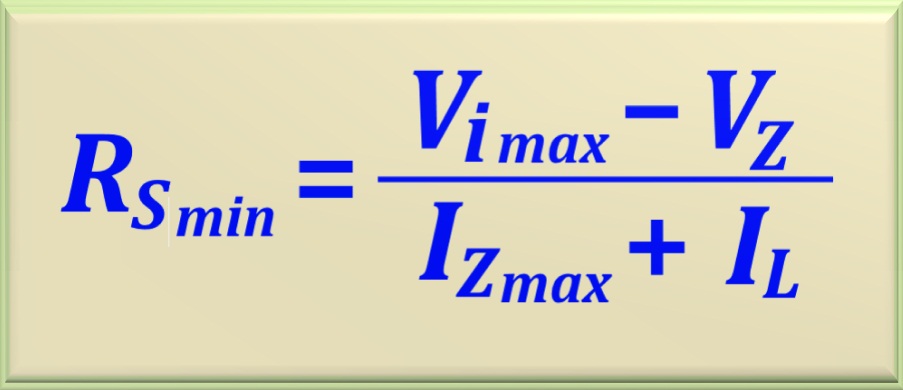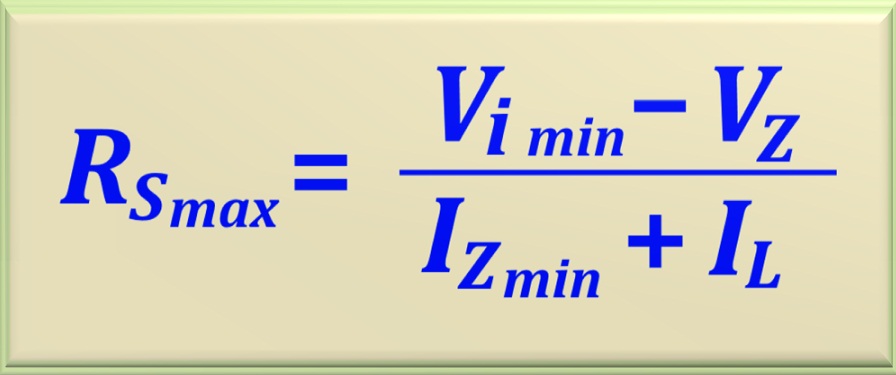Problem 64-3
Source:
Problem elaborated by the author of the site.
Be the circuit shown in the Figure 64-03.1. Assume that Vi = 27 volts with
ΔV = 4 volts and VZ = 15 volts. The current consumed by the load is 100 mA.
Determine the values of RSmax , RSmin and what the power in the zener.
Solution of the Problem 64-3
Note that the input voltage is variable but the load is constant. Then there will be variation in the current flowing
through the zener. Therefore, the case 3 is studied in the
Zener Diode Circuit Design item (Here!!).
Since the model of the zener to be used was not provided, we must start by stipulating a maximum current for the zener.
Since the load consumes 100 mA, we can make the maximum current for the zener of, say,
IZmax = 200 mA. In this case, the power in the zener will be:
Commercially there is no zener for this power. The closest is 5 watts. So let's assume that the zener is 5 watts. We can calculate the maximum current that zener can support, or:
With these two values we will calculate RSmin and RSmax using the two equations studied. Let's repeat them here.
Recalling that in this problem, Vi(min) = Vi - (ΔV/2) = 27 - 2 = 25 volts and to find the maximum, Vi(max) = Vi + (ΔV/2) = 27 + 2 = 29 volts. Then:
Note that RSmax > RSmin enabling the project. We can choose to
the series resistor the average value of the calculated values. So,
RS = 54 ohms. A commercial value that can be used is RS = 56 ohms
Note that the current through RS is not constant. Depends on variations in input voltage. So we have ISmax = (Vi(max) - VZ) / RS = 0.25 A . In this way, the maximum current flowing through the zener is IZmax = (ISmax - IL) = 0.15 A . Therefore, zener supports this current without problems. The power dissipated by it will be:
Using a 5 watt zener will not have any problems with the design.




